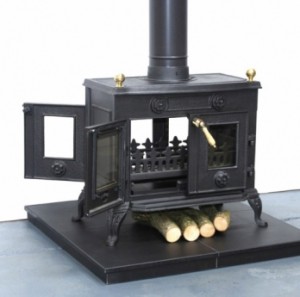Stoves and Fires
Many homes have decorative stoves as part of their home heating system, proving to be very efficient. Different types  of stoves use different fuels, there are several types, including Multi Fuel, Wood Burning, Cast Iron, Gas Fires, Inset Fires and Pellet Stoves. Choosing a stove can depend on where it is intended for use and which fuel you will be using.
of stoves use different fuels, there are several types, including Multi Fuel, Wood Burning, Cast Iron, Gas Fires, Inset Fires and Pellet Stoves. Choosing a stove can depend on where it is intended for use and which fuel you will be using.
Concerns about air pollution, climate change and deforestation have brought on new efforts to improve stove design. Some of the changes being made have been innovations for biomass burning stoves. Most stoves have always consumed a large amount of fuel but released only a limited amount of heat, all while producing polluting fumes. New designs increase the efficiency of stoves meaning that stove users can use less fuel, avoid possible health issues related to the smoke and reduce deforestation and air pollution.
Traditional wood burning stoves are constructed of solid metal, like cast iron or steel in a closed fire chamber with a brick base and an adjustable air control. These stoves are designed to burn just wood or wood-derived biomass, but modern wood burning stoves are fairly easily converted to multi-fuel stoves.
Multi Fuel stoves are capable of burning coal and peat as well as wood. A stove with a grate for the fire to burn on and a removable ash pan tend to be Multi Fuel stoves. The stoves are becoming increasingly popular as the demand for alternative types of fuel increases.
Pellet Stoves burn compressed wood or biomass pellets and are often used as a source of heat for residential and commercial establishments. The fuel burns slowly as it is fed from a storage container into a burn pot area. The appearance of Pallet Stoves has changed over time, from mundane boxes to decorative heating appliances.
Pellet Stoves are good all round appliances which are usually self igniting and cycle themselves on and off, controlled by a thermostat. Some recent developments can be remote controlled.
